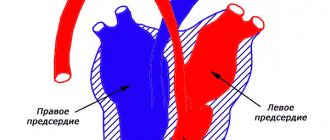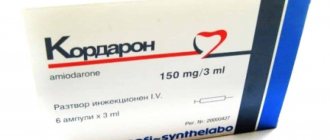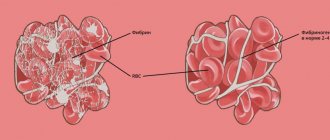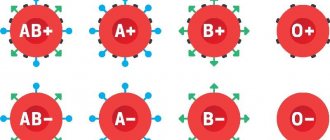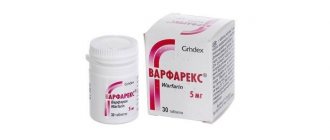GGT (gamma-glutamyl transferase or gamma-glutamyl transpeptidase) is an enzyme involved in the metabolism of amino acids.
It is found in the highest concentrations in the kidneys, liver, and pancreas, and is present in smaller quantities in other tissues of the body. The highest levels of GGT are found in renal tissue; the enzyme present in serum comes mainly from the hepatobiliary system. An increased concentration of GGT in the blood serum is most often a marker of impaired bile outflow (cholestasis), as well as intoxication caused by alcohol or drugs.
What is GGTP?
Gamma-GT (synonyms: gamma-glutamyltranspeptidase, GGTP, gamma-glutamyltransferase) refers to an enzyme that is produced during a number of biochemical processes. This substance takes part in the metabolism of amino acids and is regularly found in and inside cell membranes. It is most present in the following organs:
- liver;
- kidneys;
- prostate;
- pancreas.
If gamma-GT is elevated, the causes in women may lie in diseases of the listed organs. Since women do not have a prostate, the gamma-GT level will normally be lower than in men. Gamma-glutamyltransferase is present in small quantities in other organs, but its importance is not decisive.
An increase in the indicator never passes without leaving a trace; it always signals a problem in the body. GGTP is most abundant in the liver tissues, so damage to them should first be ruled out.
For women, the normal value is 6-32 IU/liter, or 10-66 units/liter (depending on the measurement in a specific laboratory).
For comparison, in men the figure is 18-100 units/liter, in children it varies by age. It is worth citing the most common reasons for the increase in indicators in women:
| Increased GGTP enzyme | Possible reason | What else could the problem mean? |
| More than 10 times | Liver tumors | Acute hepatitis |
| 5-10 times | Chronic hepatitis | Cirrhosis, gallbladder disease |
| Less than 5 times | Alcoholism | Taking hepatotoxic drugs |
The blood test is taken on an empty stomach and is prepared within 24 hours. Afterwards, the doctor draws conclusions about the possible preconditions for an increase in the enzyme.
What is GGT in a blood test?
Gamma glutamyl transferase (synonym: gamma glutamyl transpeptidase) is the name of a microsomal enzyme involved in amino acid metabolism. It is located on the cytoplasmic membranes (walls) of cells that perform secretory and absorption functions. Important. The enzyme is most active in the kidneys, liver and pancreas.
In the cells of the intestines, brain, heart, spleen and prostate, little activity of gamma-glutamyl transpeptidase (abbreviated GGTP or GGT) is observed. In a healthy person, GGT is found in blood cells in minimal quantities, this is due to the normal process of cell renewal in the body. However, an increase in the amount of this enzyme in the bloodstream is always associated with pathological processes and indicates the destruction of the cells in which it is contained.
Given the high concentration of GGT in the tissue of the kidneys, liver and pancreas, it is considered a sensitive marker of diseases of these organs. Gamma glutamyltransferase reacts most quickly and vividly to damage to the hepatobiliary system.
Important. When diagnosing cholecystitis, cholangitis (inflammatory process in the bile ducts) and mechanical jaundice (GGT also acts as a marker of bile stagnation), an increase in this enzyme is even more specific than an increase in ALT and AST.
Functions of the GGT
Gamma glutamyltransferase is involved in the processes:
- amino acid metabolism;
- metabolism of mediators of inflammatory reactions.
Although GGT concentrations in the renal epithelium are higher than in the liver, serum concentrations (determined in the blood) are predominantly of hepatic origin. Most of the GGT destroyed in the kidneys is excreted in the urine.
Preparing for analysis
To avoid false indicators in the final results table, it is recommended to follow preparation measures. By following the rules listed below, the results will be the most reliable, which will help to correctly diagnose or refute the disease.
- Blood is donated on an empty stomach. To avoid deviations in blood counts caused by activation of enzymes due to food intake.
- Refuse to eat fatty, highly salted, spicy, overcooked foods that are difficult for the body for at least twenty-four hours (preferably forty-eight hours).
- It is recommended to give up physical activity two days in advance, since physical effects on the body also affect the final results;
- A visit to a sauna, steam bath, or hot bath the day before can lead to fluctuations in normal values. You should avoid visiting places where the body is exposed to thermal effects;
- Limit alcohol intake and cigarette consumption at least 24 hours before the upcoming test;
- Stop using medications at least two days before the test. Drugs of certain groups can affect the parameters of a biochemical blood test.
Come to donate blood 10-15 minutes in advance. This is necessary so that the body calms down, shortness of breath goes away, and the body acclimatizes to the temperature conditions of the room (especially after a cold street). If you are very hungry, it is better to take food with you and satisfy your hunger immediately after blood collection.
Normal indicator for adults and children
The normal range of gamma-glutamyltransferase levels differs between men and women. The norm for women is no more than 30 units per liter (U/l), and for males - no more than 50. The reference values are given for informational purposes only.
In each laboratory, standards may differ depending on which test systems are used to determine the activity of this enzyme in blood serum. Taking this into account, it is better to study GGT levels over time in the same clinical diagnostic laboratory.
You should not try to decipher the analysis results yourself. Let a specialist handle this.
Normal GGT levels are higher in children than in adults and vary depending on the age of the child. In the first week of a child's life, the GGTP level should not exceed 180 units per liter. Then the enzyme level can increase, but not more than 200 units during the first half of the year. By the first year of a child’s life, the level of gamma-glutamyl transferase decreases to a level of no more than 35 units per liter.
During the growth and life of a child, the level of glutamyl transferase does not change much. Around the age of twelve, normal levels of the enzyme become the same as for an adult. A change in the activity of the enzyme glutamyltransferase above the reference values indicates pathology. In addition to diseases, taking medications can lead to deviations from the norm.
How to detect an increase in gamma GT?
With a number of symptoms, one can suspect that the gamma-GT level in women is increased. Only a slight increase in it may not give a clinical picture. Typically, with all pathologies of the hepatobiliary system that accompany the growth of gamma-HT, there is stagnation of bile. This condition can manifest itself:
- jaundice of the skin, yellowing of the sclera;
- heaviness, pain in the liver area;
- sharp pain after eating;
- weakness, decreased performance.
No less often, the patient develops dyspeptic disorders - nausea, vomiting, diarrhea. Sometimes constipation occurs instead of diarrhea. Since even heart disease can be the cause of an increase in GGTP, they may be accompanied by chest pain, pallor, fainting, and shortness of breath.
Cholestasis is the main reason for the increase in the indicator
With pathologies of the hepatobiliary system, cholestasis occurs - this condition means that bile reduces the rate of excretion. The reason is both the cessation of its transport through the biliary tract and the slowdown in production in the liver.
Gamma-GT concentrations in women most often increase due to liver disease.
Blockage of bile outflow can occur in advanced stages of cirrhosis, with severe fatty hepatosis. If the levels of AST and ALT of the liver are simultaneously increased, one can suspect viral hepatitis A, B, and less often C. Outside of the inflammatory process, the level of gamma-glutamyltransferase increases with toxic liver damage, poisoning, and sclerosing cholangitis. All of these diseases cause intrahepatic cholestasis, which is also accompanied by an increase in bilirubin.
Extrahepatic cholestasis can have the same consequences, when the work of ducts located outside the liver is disrupted. This means that the gallbladder is affected in the following diseases:
- stones in the organ;
- slang syndrome (thickening of bile);
- neoplasms;
- acute and chronic inflammation of the organ - cholecystitis.
All these pathologies often cause a concomitant increase in alkaline phosphatase in the blood. Treatment will be aimed at improving the flow of bile and blocking inflammation.
In what cases is research usually prescribed?
A blood test for GGT is important for diagnosing liver pathology; for this purpose it is usually prescribed along with the following tests: AST, ALT, bilirubin, alkaline phosphatase. GGT is highly informative in identifying obstructive jaundice, cholangitis and cholecystitis; the increase in the level of this indicator begins earlier than that of other liver markers and lasts longer.
In viral hepatitis, GGT does not increase much, and in this case, determination of transaminases (ALT, AST) is more useful. High levels of GGT are observed in cases of impaired bile outflow, obstructive processes in the liver (tens of times higher than normal), in the presence of primary or secondary (metastases) neoplasms, and in cirrhosis.
Tumor processes
Cancer of the liver and other organs of the hepatobiliary system can be primary or metastatic. If cancer cells multiply in organs, liver function tests and gamma-GT begin to be released in increased volume. For large tumors, the analysis transcript shows a serious excess of the indicator - 10 times or more.
In the initial stages of oncology, the excess of the enzyme can be moderate.
Among other things, a pancreatic tumor can cause changes in tests. This organ is responsible for the production of a number of amino acids, which include gamma-glutamyl transpeptidase.
Therefore, after treatment, the amount of enzyme in the blood stabilizes, and in case of relapse it usually increases. A moderate increase in the number can indicate the presence of cysts and other benign tumors.
References
- He, T., Joyner, M., Katusic, Z. Aging decreases expression and activity of glutathione peroxidase-1 in human endothelial progenitor cells. / In: Microvascular Research, 2009. - Vol. 78. - P. 447-452. doi: 10.1016/j.mvr.2009.08.009
- Flohé, L. Glutathione peroxidase: fact and fiction. Ciba Found Symp. 1978. - Vol. (65). P. 95-122.
- Doroshow, J., Akman, S., Chu, F. Role of the glutathione-glutathione peroxidase cycle in the cytotoxicity of the anticancer quinones, 1990. - Vol. 47(3). - P. 359-70. doi: 10.1016/0163-7258(90)90062-7.
- Rodriguez, C., Mayo, J., Sainz, R. Regulation of antioxidant enzymes: a significant role for melatonin. J Pineal Res. 2004. - Vol. 36(1). — P. 1-9. doi: 10.1046/j.1600-079x.2003.00092.x.
Effects of alcohol
The release of GGT is directly related to the consumption of alcohol - even when determining the initial high levels of the enzyme in the blood, giving up alcohol reduces the GGT content by 2 times after 10 days. If after a month the GGT level returns to normal, this means there is no pathology. If the indicators are close to exceeding the norm, it is worth thinking about completely giving up alcohol, since it is this that causes alcoholism and such serious conditions as cirrhosis, injuries while intoxicated, and delirium tremens.
In the case of a single alcohol intoxication, a period of abstinence is sufficient for the indicators to return to normal.
A test for GGT, done in conjunction with other studies of liver enzymes (ALT, AST), can determine not only alcoholism, but also alcoholic steatohepatitis - an inflammatory process with the parallel formation of areas of necrosis under the influence of ethanol metabolic products.
In other words, a penchant for drinking alcohol that has not yet developed into alcoholism. Some companies have made such a test mandatory during a medical examination, and in case of a positive result, it becomes a reason for recognizing professional unsuitability. Treatment of the identified pathology depends on the stage of the disease and is carried out only under the supervision of a doctor.
Why are the numbers falling?
A decrease in such an indicator as glutamine aminotransferase is quite rare. And it is due to one of three reasons:
- Tests for rheumatoid arthritis: what tests to take and their meanings
- Hypothyroidism is a pathological condition of the thyroid gland in which it produces an insufficient amount of hormones - thyroxine and triiodothyronine - which leads to a malfunction in the body's metabolic processes,
- Use of certain medications
- GGT is reduced in patients undergoing treatment for alcohol addiction after a month of therapy.
Other possible reasons
Regular examinations and blood tests are recommended for anyone undergoing long-term treatment. Many tablets cause cytolysis (cell death) of the liver. This provokes the release of large amounts of liver enzymes into the blood. In women, this often happens when taking a course of estrogens and corticosteroids. The following gives the same effect:
- drugs for tuberculosis;
- a number of antibiotics, especially tetracyclines;
- barbiturates;
- neuroleptics;
- chemotherapy;
- non-steroidal anti-inflammatory drugs.
For treatment, you should take a course of hepatoprotectors - Essentiale, Heptral. All poisons, including alcohol, have a toxic effect on the liver. In chronic alcoholism, the amount of the enzyme can always be increased, and even after quitting alcohol it does not return to normal immediately. Among the rarer reasons for the increase in gamma HT in women are:
- systemic lupus erythematosus;
- Infectious mononucleosis;
- acute pyelonephritis;
- glomerulonephritis;
- kidney tumors;
- myocardial infarction;
- heart failure.
In some cases, the enzyme is elevated in thyrotoxicosis - hyperfunction of the thyroid gland. All of these pathologies do not occur without additional symptoms and are easily identified during examination.
Reasons for reducing GGT
Thyroid pathology can cause a decrease in GGT
There are not many reasons for a decrease in GGT; it is mainly due to endocrinological pathology of the thyroid gland:
- Congenital underdevelopment of the thyroid gland;
- Hereditary disorder of the synthesis of thyroid hormones;
- Autoimmune diseases of the thyroid gland associated with a decrease in its function (hypothyroidism);
- Conditions after surgery on the thyroid gland;
- Lack of iodine in food.
How to treat pathology?
As for medications that can normalize gamma HT levels, they should be prescribed by a doctor in accordance with the reasons for the increase in the enzyme. In other words, in order to reduce the concentration of the enzyme, it is necessary to treat the underlying disease, stop taking inducer medications or alcohol. Since an increase in gamma TG is most often associated with choletasis, Urdoxa, Ursosan, Urso, Ursofalk, as well as other drugs based on ursodeoxycholic acid are prescribed. In some cases, vitamin C can reduce gamma-GT levels.
Liver functions are improved by Essentiale, Livolin, Rezalut and other essential phospholipids. If the increase in gamma-GT is associated with stagnation of bile, Alahol, Hofitol and other choleretic drugs are recommended. Alkaline mineral waters can also be prescribed, which will help reduce the viscosity of bile and facilitate its removal.
For pain in the liver area, Besalol, Spasmolitin, No-shpa and other antispasmodics are prescribed.
Skin itching, which often accompanies bile stagnation, is well relieved by Rifampicin or Cholestriamine. The gamma GT test is a very sensitive test that gives the specialist more information than alkaline phosphatase, ALT and AST. Therefore, it is often used not only to assess a person’s health status, but also to monitor the effectiveness of treatment.

